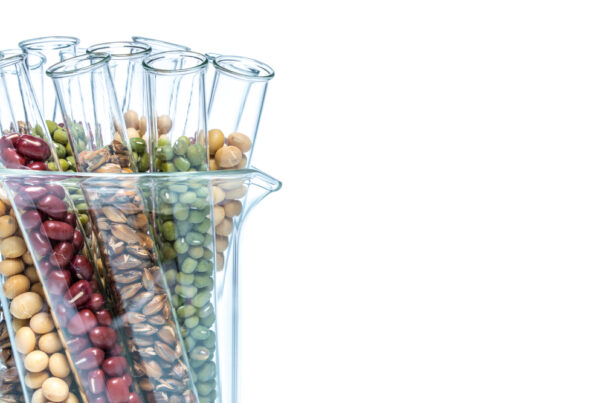Endotoxins are part of the outer membrane of the cell wall of Gram-negative bacteria, and is often responsible for the ‘die-off’ reactions many experience when they are taking anti-microbials that kill off bacteria, parasites, yeasts, mold, lyme or other microbes inside their bodies.
LIPOPOLYSACCHARIDES
Lipopolysaccharides (LPS) are known as lipoglycans and endotoxins. They are large molecules consisting of a lipid and polysaccharide composed of O-antigen, outer core and inner core joined by a convalent bond, that sits on the outer wall of gram negative bacteria (strep) and spirochetes (lyme).
It’s function is to:
- Preserve integrity of bacterial cell walls
- Protect bacteria against chemical attack
If you want to successfully kill a gram negative organism you will have to stop it from making new cell walls.
Lipopolysaccharides are made up of 3 parts:
- Antigen-O – this is on the outside where immune antibodies attach to
- Lipid A – this is the inner unexposed endotoxin
- Core – connects Antigen-O and Lipid A
As you kill off bacteria their cell membranes rupture and expose the inner endotoxin Lipid A. LPS-binding proteins binds to these cell wall fragments and transport them to CD14 immune receptor cells where they are neutralized. CD14 receptor cells can only do this job if LPS fragments are bound to binding proteins.
What happens now is that CD14 transports the endotoxin to MD2 (another protein). MD2 binds with immune receptor TLR4 (Toll Like Receptor 4) which then sends the message to macrophages to release cytokines (interleukins and TNFα), and endothelial cells to release nitric oxide from iNOS. This creates inflammation and dilates the blood vessels to remove the toxins as quickly as possible.
Lipopolysaccharides will also influence your digestion to suit its own purpose. LPS inhibits ghrelin.
iNOS AND ITS INTERACTIONS
Nitric oxide can have direct interactions with:
- Amino groups
- Thiol (SH) groups
- Diazo groups
- Tyrosyl groups
- Heme
- Iron
- Sulfur centers
and produce peroxynitrite (PN) in its reaction with super oxide (SO) which can be very damaging.
DIE-OFF REACTIONS
In a sense die-off reactions means you are killing pathogenic organisms which is a good thing. It has to be managed though as there shouldn’t be a reason to suffer through it. The body can handle reasonable die-off’s pretty well. When this becomes too much, inflammation will increase dramatically, blood pressure drops too much and less oxygen is transported to tissues and organs. Excess endotoxins can also damage DNA.
Reversing DNA Damage in Chronic Illness and Fertility
Some die-off reactions include:
- Fever
- High white blood cell count
- Low iron
- Blood clotting disorders – thrombocytopenia, platelet aggregation
- Constipation
- Headaches
- Muscle pain
LPS also produces considerable amounts of ROS (Reactive Oxygen Species) and other free radicals.
AUTO-IMMUNE DISEASE
LPS can cause leaky gut. If the immune system is constantly being activated to deal with endotoxins it can eventually lead to the development of auto-immune disease such as diabetes type I, rheumatoid arthritis, thyroid diseases (Grave’s, Hashimoto’s), IBD (Irritable Bowel Disease), MS (Multiple Sclerosis) and others.
DIATOMACEOUS EARTH (DAE)
So this is not necessarily a plug for DAE, but I was curious to look more into its mechanisms. It’s something that one of my farmer-friends use in their livestock to get rid of worms and parasites within a few weeks. They just add it to their feed.
Obviously if you intend to consume it it needs to be food-grade and you have to be very careful not to inhale it as silica dust can be very harmful to the lungs. There’s unfortunately not a lot of human studies I could find on it, so much of it is anecdotal.
DAE is the fossilized remains of a hard-shelled algae (diatoms) consisting of about 90% silica and 10% other minerals with many industrial applications. There is some concern in regards to the ‘other 10%’ as it often lists heavy metals that makes up the remainder. Apparently even after treating DAE with heavy acid solutions the bonds with heavy metals did not break, which seems to indicate that it will just pass through the digestive system inert without having any effect. DAEs’ ability to filtrate water/beer/wine/syrups/honey to remove impurities, and insecticide properties is what makes it so attractive for treating gut dysbiosis. The fine powder absorbs lipids/fats from the waxy outer layer of exoskeletons which dehydrates them. This is going a bit off-topic but a study published in 1998 reported that DAE significantly reduced serum cholesterol after about 4-6 weeks as well as LDL’s and TG’s. What’s even more interesting is that a month after stopping the DAE the cholesterol benefits remained and HDL was increased which indicates that DAE seem to change fat metabolism in general.
There’s a lot of research and field reports on DAE and animals with positive effects reported in coat hair, increased milk production in dairy cows, less mastitis, improvements in fly problems, no warble problems, elimination of odours, reduced desire to lick soil, fewer deaths in young animals, lower feed costs as animals needed to eat less to reach nutritional requirements, and markedly reduced vet bills. So why wouldn’t it do the same for humans?
According to Dr. Knight (Weston Price) DAE absorbs methyl mercury, E. coli, endotoxins, viruses, organophosphates (round-up) and drug residues in the digestive tract. It is recommended to use no more than 1tsp – 1tbsp per 50kg of body weight dissolved in water per day. Some may have to use as little as 1/2 tsp or less. It really depends. It is not supposed to be a quick process. You can do more harm than good by pushing this.
HOW TO MANAGE ‘DIE-OFF’
- Drink plenty of water
- Consume more fats
- Follow a mainly paleo-type diet
- Oligofructose and bifidobacteria – oligofructose may not be suitable for those with SIBO
- Quercetain
- EPA and DHA (Omega 3’s)
- Exercise
You can also check in our Resource Section for more tips.
References:
Quercetin reduces inflammatory responses in LPS-stimulated cardiomyoblasts





